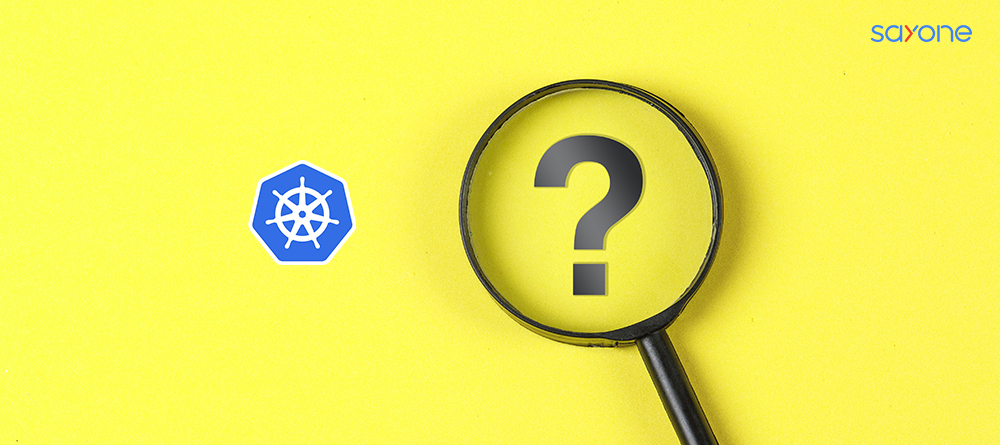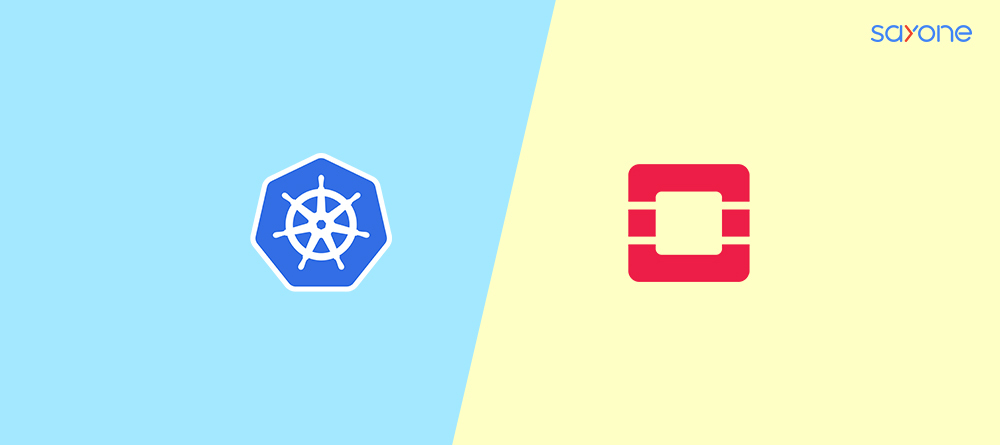Kubernetes vs. OpenStack – Are they Competitors

Share This Article
Table of Contents
Subscribe to Our Blog
We're committed to your privacy. SayOne uses the information you provide to us to contact you about our relevant content, products, and services. check out our privacy policy.
Kubernetes: An Overview of Its Key Characteristics

Kubernetes is a cloud-based open-source container service that packs up software code in such a way that it executes unhindered on any infrastructure. It provides an opportunity for developers to quickly create code and deploy it in a secure fashion.
The virtualization environment provided by Kubernetes can be used to coordinate multiple services/microservices within a major application smoothly. Kubernetes is also versatile enough to make all the microservices perform equally well by swapping them between multiple cloud environments. Finally, as it is easily accessible, it is a favorite with developers.
Get to Know Kubernetes Powerful Features
The Kubernetes environment is well-stocked with a number of tools that help developers to easily customize the environment so that different microservices can perform smoothly.
Health of the Application
Kubernetes provides many checks that help developers rate the health of applications. This helps to save both cost and time. Kubernetes runs regular health checks so that applications do not crash suddenly. If an application stops working just because of memory overflow, it restarts the app. However, Kubernetes cannot check the correctness of the application. However, there are other tools to correct the application logic if required.
Microservices Management
Managing communications among the different microservices is a tough task for any application developer. However, if Kubernetes is used, this problem can be taken care of as it decides how best to route the communication. The developer has to just define the service. The rest of the work is done by Kubernetes.
Read our blog "Why Business leaders should care about Microservices"
As an example, if any microservice is defined to work as a user service, then any other service that runs under the same definition can send a request to this one. The entire communication setup is thus automated for the different microservices.
Custom Controllers
Kubernetes allows monitoring clusters and making necessary changes. Customizing controller loops gives extra power to the developers, allowing them to control the execution to perfection. This tool can even allow developers to reload application configurations whenever the conditions require it. This helps developers to smoothly manage application deployments. Moreover, controllers are formed as single pieces of code; tool-chains that are otherwise used require that the users have knowledge of different other interfaces to operate them properly.
Download our eBook for FREE: “Global Software Development Rates – an Overview”.
OpenStack Characteristics: An Overview of the Open Source Platform's Features

OpenStack is a set of tools that are used to manage cloud-computing operations in private and public cloud environments. OpenStack helps users to make use of virtual environments/machines and manage instances while on the move. As an example, communication work of applications can be instantly scaled up, thus helping effective communication in big businesses that have sudden demand surges.
Get in touch with us for a free consultation.
OpenStack – Features
OpenStack possesses many features and tools that are common to Kubernetes. However, it also has some unique features which are a reason for its fan base.
Open-Source Platform
This has an inherent advantage in that people can see and access the code, make desired changes and give it back to the community of OpenStack users. Therefore, features and troubleshooting tools are constantly being improved by enthusiasts from all over the world. Also, this leaves a tremendous scope for innovation.
Read our blog "Advantages of Microservices Architecture, Disadvantages of Microservices Architecture"
Web App Dashboard
OpenStack’s web app dashboard provides a graphical interface for all the tools and facilities that are available for use. This makes it easy even for new users to learn about the product. Moreover, it can be modified to suit different environments.
Big Data Management
OpenStack has the ability to assist businesses that must deal with massive amounts of storage, computing, and networking resources. This is especially relevant in these days of Big Data generation. There are different plugins available in OpenStack that make it possible to support different vendors. Moreover, clusters can be provisioned whenever required in a jiffy and it is also possible to configure them quickly.
Kubernetes and OpenStack: How do they Differ

OpenStack was released in 2010 and it was only in 2014 that Kubernetes reached the market. This very clearly tells us that both were released onto the market with very different goals. However, one cannot deny the fact that the technologies are similar. Whereas OpenStack claimed to be an alternative to AWS, Kubernetes was touted to form a bridge between the major cloud providers in the market and the private data centers.
Read our blog "How Kubernetes Works to Support Microservices Architecture"
Though OpenStack has a larger user base, it is not as well-organized as Kubernetes. Another difference is that whereas Kubernetes is a containerization tool, OpenStack is a cloud service tool. Google is a Kubernetes user and PayPal and Wikipedia are OpenStack users. OpenStack’s functions are geared towards managing public and private cloud setups. However, Kubernetes manages applications in containers for large applications to run unhindered.
Can Kubernetes and OpenStack be made to Work Together?

In this article, we have, till now, spoken primarly about how Kubernetes differs from OpenStack. However, there are instances when both can perform seamlessly together. Combining Kubernetes and OpenStack can improve scalability and automation of application functions. The latest versions of Kubernetes are made to manage Kubernetes applications on the cloud. This makes it easier for both to work incongruence. OpenStack also has the capabilities to allow Kubernetes to run efficiently and thus manage resources and networking more smoothly.
The Advantages of Using Kubernetes and OpenStack Together
When used together, Kubernetes and OpenStack can help to improve on-demand services to be accessed anytime that is required. Additionally, applications can be ported easily and development of applications can also be speeded up.
When Kubernetes is combined with cloud-native patterns, they can help to easily create software updates and versioning.
Security is a major concern when using containers. OpenStack can be used to provide high levels of security in such applications. Trusted container content can be ably supported using scanning, image-signing, and verification.
Read our blog "How Kubernetes Changed The Face Of The Cloud"
Using OpenStack along with Kubernetes helps in the standardization of container technology, making it easier to set up and deploy containers for those organizations that currently use OpenStack.
Combining Kubernetes cluster orchestration with OpenStack makes it easy to manage OpenStack, which otherwise is difficult to learn.
Software applications can be developed and deployed faster when using both together. One can rapidly create enterprise-scale software when using OpenStack and Kubernetes together.
Kubernetes is more stable than OpenStack. However, when the two are combined, the latter’s stability is improved considerably.
Final Thoughts
Though the two technologies are undeniably different and were released into the market with different goals, they can work synergistically and pave the way for more innovations in enterprise-grade level software.
How SayOne Can Assist
At SayOne, our team of developers is fully equipped to understand your business process in full, however, complex it may be. Whether you are a start-up, an SMB or a large-scale enterprise, we are capable of translating your processes into fully independent microservices applications. We also help organizations to overhaul their existing business systems into resilient microservices systems that work with high levels of efficiency.
Contact us today if you want to switch to microservices applications in your organization.
Share This Article
Subscribe to Our Blog
We're committed to your privacy. SayOne uses the information you provide to us to contact you about our relevant content, products, and services. check out our privacy policy.




